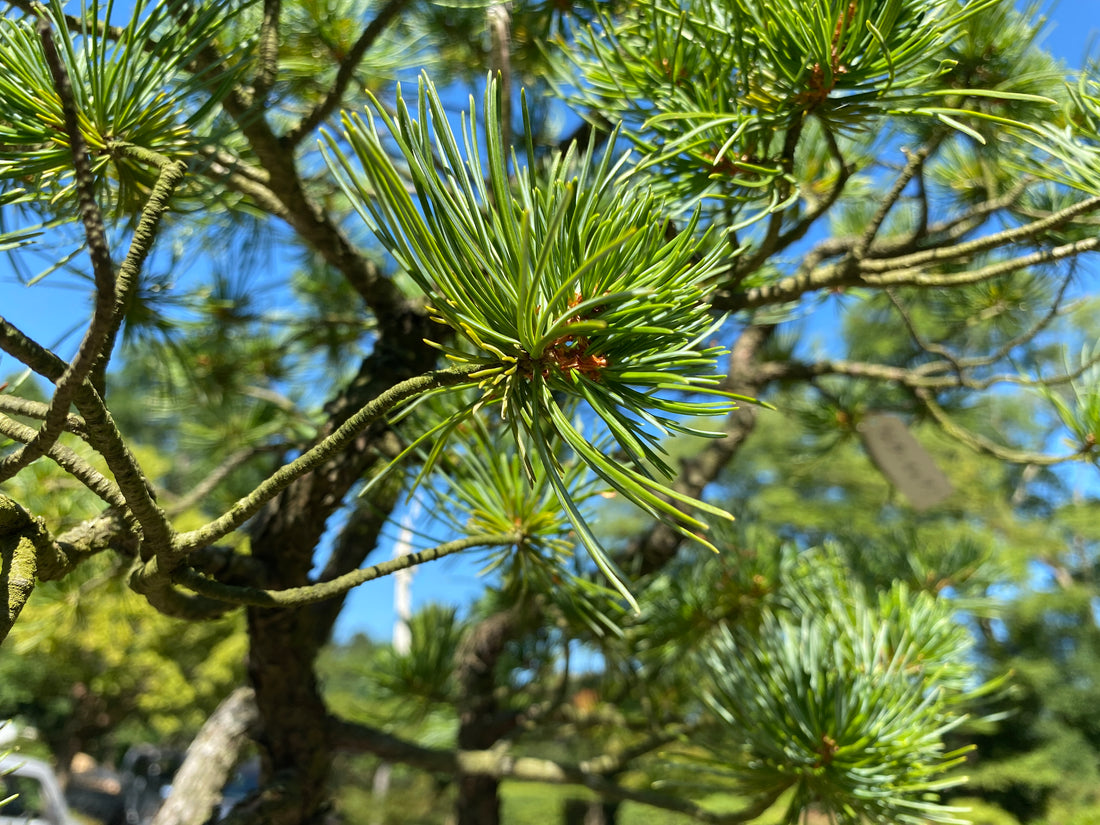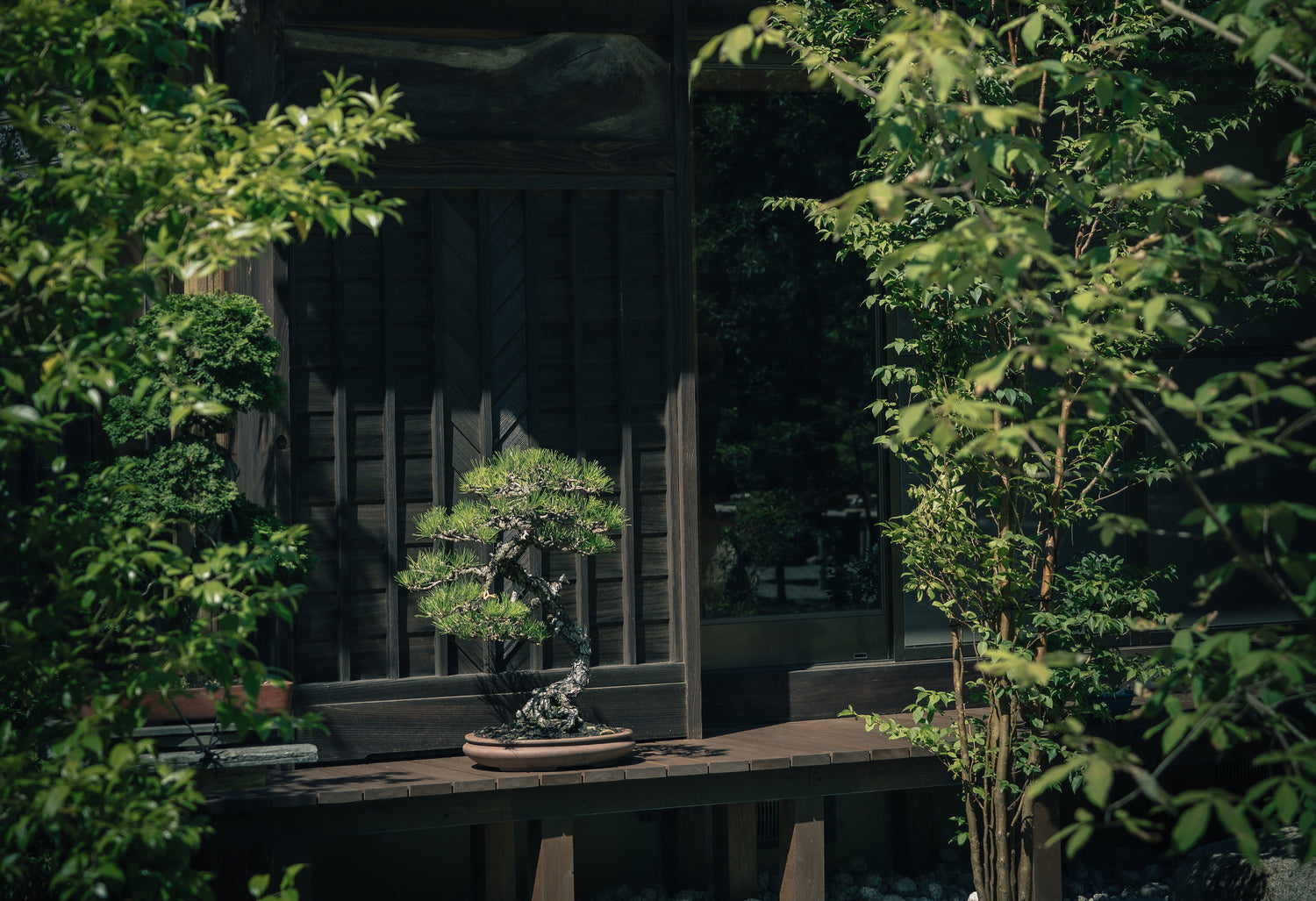White pine bonsai, specifically the Pinus parviflora species, is a captivating choice for enthusiasts in the art of bonsai. As we shift our focus to single flush pines, it's important to understand the timing and indicators for working on white pines.
In Japanese, white pine is "Goyomatsu" (五葉松). The kanji for Goyomatsu literally translates to "five-needle pine”. This term refers to the presence of five needles in a single cluster. In this article, we will explore the techniques to care for this species of bonsai.

Schedule
White pines require a different approach when it comes to watering and fertilization. Their needle elongation is directly influenced by the availability of water and nutrients. To maintain healthy white pine bonsai with quality needle character, it's important to control watering and avoid overfertilization. White pines originate from alpine environments and don't need excessive watering. By adhering to a strict watering schedule and refraining from fertilizing in the spring, we can manage the growth of white pine bonsai effectively. This approach ensures their health and vitality while preserving their unique appearance.

You can see three distinct lengths of needles corresponding the growing conditions over the past three years
In the middle of July, by observing the shedding of needle sheaths, we can determine when the needles have hardened off and the tree is ready to be worked on. At this stage, the vascular attachment of the needles and the stem has become secure, minimizing the risk of damaging the current year's growth or causing the needles to tear off. We can confidently proceed with styling and shaping the tree to our desired vision. Additionally, we can now introduce fertilizer to support the tree's development.
During the summertime, typically at the end of July or the beginning of August, we can begin applying fertilizer. We recommend to provide two rounds of fertilizer, spaced roughly a month apart. For example, fertilizing at the beginning of August and then again at the beginning of September. The timing may vary depending on the local environment and the shedding of sheaths. In some cases, mid-July, mid-August, and mid-September might be suitable intervals. The fertilizer we administer during this period will be utilized by the tree to develop buds for the following year, rather than directly nourishing the current year's leaves. This unique aspect is specific to white pines compared to other pine species.
Needles management
When it comes to managing the needle growth of Japanese white pines, there are a few techniques to consider:
1. Depending on the specific character of a tree JWP will retain two or three years of needles meaning the current year’s needles (1) and last year's needles (2) or perhaps also the needles from two years prior (3). One approach is to remove the oldest needles(3) and clean out the branch crotches, leaving the majority of last year's needles in place. These needles (3) would naturally shed in the fall anyway. You have the option to perform this needle removal either now or later. The second option is to remove all but the most recent growth of needles (1), if done the remaining needles will have a consistent length across the entire tree.

A JWP only holding two years of needles, with the second year needles turn yellow as the tree prepares to shed them in the fall

Current year needle (1)


Creation of new buds
2. It is crucial to pay attention to the physiological aspect of needle removal. If old needles are pulling off and causing bark damage, it's best to avoid pulling them off, and this is one of the variables that should be considered when cleaning out trees as stated above. Regardless of how many years worth of needles are removed instead of pulling them you can use the technique of cutting them if you prefer. Leaving approximately 5 millimeters at the base of the needle cluster intact to promote back budding in that area. However, this technique has some downsides. It can be time-consuming, and as the cut needles die back, it can be visually unappealing with many old needle remnants to be cleaned out later.
Before

After

3. There is a technique that involves cutting back the length of this year's shoots while leaving some of the needles, with the expectation of getting back buds on the remaining shoot. However, based on my personal experience, I have not observed successful back budding on the shortened shoot. Instead, the back budding tends to occur closer to the base or around the secondary buds. It is possible that timing or other environmental factors may play a role in the success of this technique, but since I haven't achieved the desired results, I choose not to employ it except on rare occasions.
As we continue to care for and refine white pine bonsai, it's essential to adapt techniques to our specific environment and circumstances. By respecting the unique nature of this species and staying attentive to its growth patterns, we can cultivate thriving and visually captivating white pine bonsai that bring the beauty of nature into our homes and gardens.


